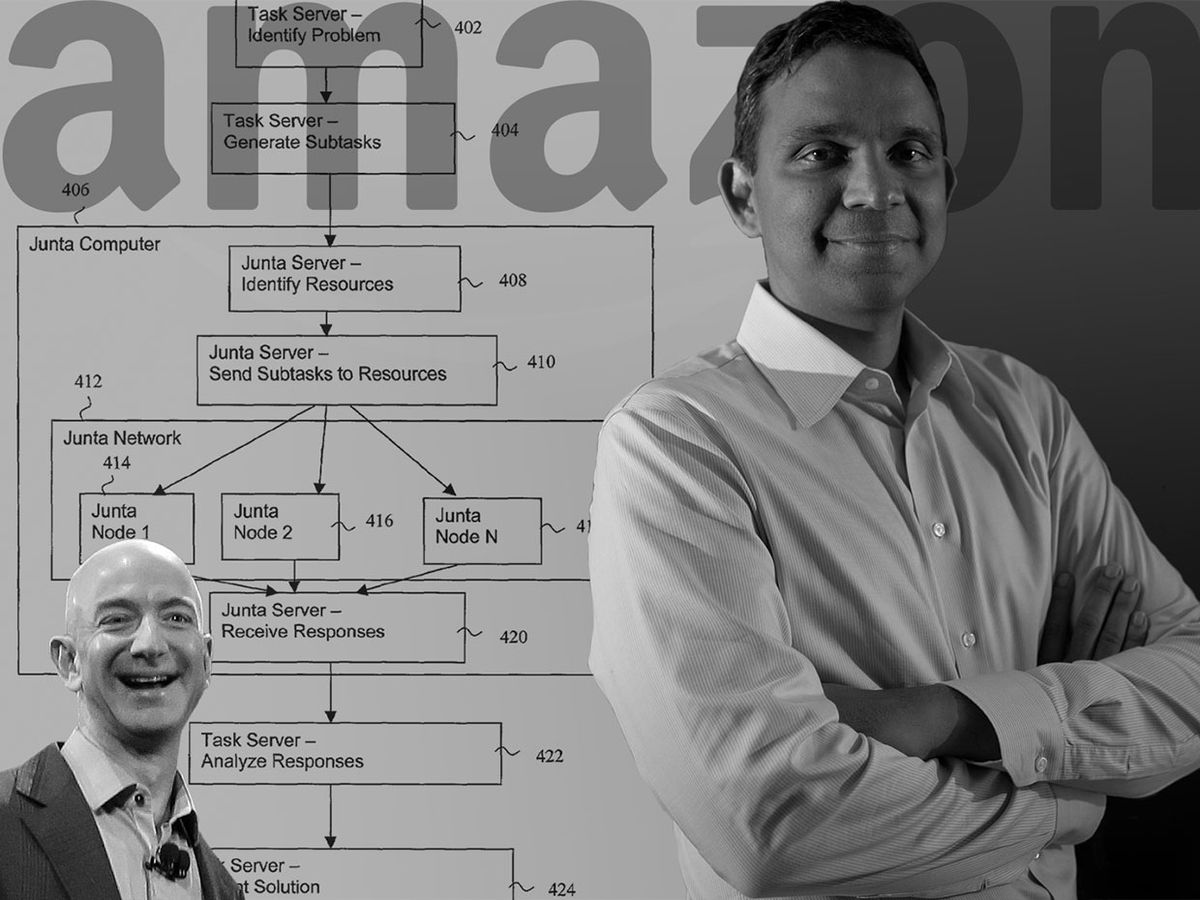The history of AI is often told as the story of machines getting smarter over time. What’s lost is the human element in the narrative, how intelligent machines are designed, trained, and powered by human minds and bodies.
In this six-part series, we explore that human history of AI—how innovators, thinkers, workers, and sometimes hucksters have created algorithms that can replicate human thought and behavior (or at least appear to). While it can be exciting to be swept up by the idea of superintelligent computers that have no need for human input, the true history of smart machines shows that our AI is only as good as we are.
Part 6: Mechanical Turk Revisited
At the turn of millennium, Amazon began expanding its services beyond bookselling. As the variety of products on the site grew, the company had to figure out new ways to categorize and organize them. Part of this task was removing tens of thousands of duplicate products that were popping up on the website.
Engineers at the company tried to write software that could automatically eliminate all duplicates across the site. Identifying and deleting objects seemed to be a simple task, one well within the capacities of a machine. Yet the engineers soon gave up, describing the data-processing challenge as “insurmountable.” This task, which presupposed the ability to notice subtle differences and similarities between pictures and text, actually required human intelligence.
Amazon was left with a conundrum. Deleting duplicate products from the site was a trivial task for humans, but the sheer number of duplicates would require a huge workforce. Coordinating that many workers on one task was not a trivial problem.
An Amazon manager named Venky Harinarayan came up with a solution. His patent described a “hybrid machine/human computing arrangement,” which would break down tasks into small units, or “subtasks” and distribute them to a network of human workers.
In the case of deleting duplicates, a central computer could divide Amazon’s site into small sections—say, 100 product pages for can openers—and send the sections to human workers over the Internet. The workers could then identify duplicates in these small units and send their pieces of the puzzle back.
This distributed system offered a crucial advantage: The workers didn’t have to be centralized in one place but could instead complete the subtasks on their own personal computers wherever they happened to be, whenever they chose. Essentially, what Harinaryran developed was an effective way to distribute low-skill yet difficult-to-automate work to a broad network of humans who could work in parallel.
The method proved so effective in Amazon’s internal operations, Jeff Bezos decided this system could be sold as a service to other companies. Bezos turned Harinaryan’s technology into a marketplace for laborers. There, businesses that had tasks that were easy for humans (but hard to automate) could be matched with a network of freelance workers, who would do the tasks for small amounts of money.
Thus was born Amazon Mechanical Turk, or mTurk for short. The service launched in 2005, and the user base quickly grew. Businesses and researchers around the globe began uploading thousands of so-called “human intelligence tasks” onto the platform, such as transcribing audio or captioning images. These tasks were dutifully carried out by an internationally dispersed and anonymous group of workers for a small fee (one aggrieved worker reported an average fee of 20 cents per task).
The name of this new service was a wink at the chess-playing machine of the 18th century, the Mechanical Turk invented by the huckster Wolfgang von Kempelen. And just like that faux automaton, inside which hid a human chess player, the mTurk platform was designed to make human labor invisible. Workers on the platform are not represented with names, but with numbers, and communication between the requester and the worker is entirely depersonalized. Bezos himself has called these dehumanized workers “artificial artificial intelligence.”
Today, mTurk is a thriving marketplace with hundreds of thousands of workers around the world. While the online platform provides a source of income for people who otherwise might not have access to jobs, the labor conditions are highly questionable. Some critics have argued that by keeping the workers invisible and atomized, Amazon has made it easier for them to be exploited. A research paper [PDF] published in December 2017 found that workers earned a median wage of approximately US $2 per hour, and only 4 percent earned more than $7.25 per hour.
Interestingly, mTurk has also become crucial for the development of machine-learning applications. In machine learning, an AI program is given a large data set, then learns on its own how to find patterns and draw conclusions. MTurk workers are frequently used to build and label these training data sets, yet their role in machine learning is often overlooked.
The dynamic now playing out between the AI community and mTurk is one that has been ever-present throughout the history of machine intelligence. We eagerly admire the visage of the autonomous “intelligent machine,” while ignoring, or even actively concealing, the human labor that makes it possible.
Perhaps we can take a lesson from the author Edgar Allan Poe. When he viewed von Kempelen’s Mechanical Turk, he was not fooled by the illusion. Instead, he wondered what it would be like for the chess player trapped inside, the concealed laborer “tightly compressed” among cogs and levers in “exceedingly painful and awkward positions.”
In our current moment, when headlines about AI breakthroughs populate our news feeds, it’s important to remember Poe’s forensic attitude. It can be entertaining—if sometimes alarming—to be swept up in the hype over AI, and to be carried away by the vision of machines that have no need for mere mortals. But if you look closer, you’ll likely see the traces of human labor.
This is the final installment of a six-part series on the untold history of AI. Part 5 told a story of algorithmic bias—from the 1980s.


